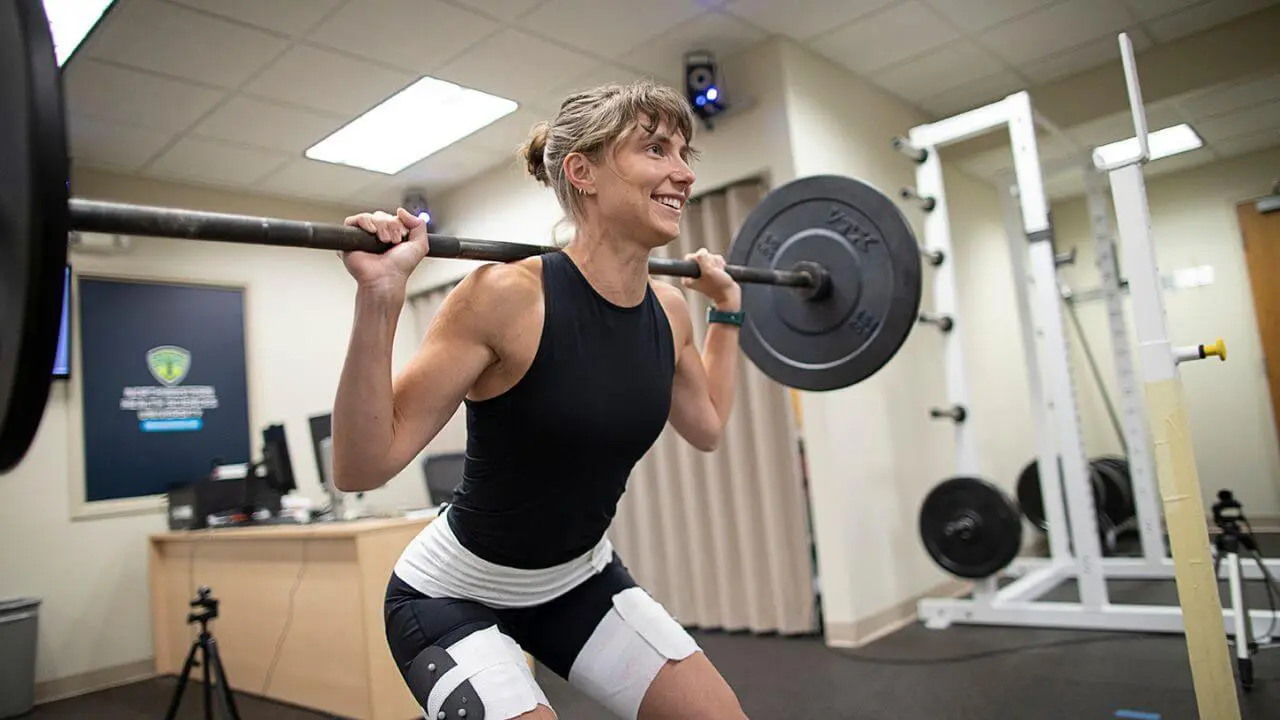Training for a Marathon? You Should be Lifting
Training for a Marathon?
So, you’ve decided to run a marathon. Your first thought is probably “wow, I’m about to cover a lot of miles.” While a long, strong running plan is necessary when preparing for a marathon, it’s not the only exercise you should think of.
Weight training for marathon runners can make a significant difference. Whether you’re concerned about injury or trying to PR, weightlifting should absolutely be part of your training plan.
What Will Weight Training Help With? Most Everything.
Running is an ideal way to prepare for a marathon, as you would expect. Getting those miles in will prepare your legs and strengthen your lungs, ensuring you’re ready for 26.2 miles. But think about how much force all those miles are putting on your body.
I believe physical fitness consists of three main components – flexibility, strength and cardio. All three are interrelated and synergistic,” explained Dr. Hanson.
“Runners really like to focus on the cardio aspect as it allows them to run. However, neglecting the other two, especially strength, will put a runner at risk of injury. Therefore, it is highly recommended to include some sort of weight training in your fitness regime. You needn’t be a yoga master to take time to stretch and you needn’t be a gym rat to take time to weight train.”
Dr. Hanson is no stranger to working with runners. He incorporates a lot of soft tissue work in his treatments and has worked with many marathoners, triathletes, and 5k beginners throughout their training seasons.
To put it simply, strength training for marathon runners can help with ease of breathing, muscle strength, and injury prevention. It might seem obvious that lifting would strengthen your muscles and help you better tolerate forces on the body, but it also has more benefits than you might think.
Recently, there has been a lot of attention on the importance of lifting for women, and for good reason! For all people, weightlifting creates lean muscle mass, which allows oxygen to flow better through the lungs, vessels, and the muscles themselves. What does that mean for you? More efficiency, which should make your training miles feel better.
What Should Weight Training for Marathon Runners Look Like?
As we’ve learned, generalized strength training is going to have systemic benefits for your body. Dr. Hanson says exercises that work larger muscle groups can be a great place to start.
This includes deadlifts, lunges, squats, bench presses, overhead presses, and planks. “You’ll get a lot of bang for your buck with exercises that incorporate many muscle groups. An athlete can cover a lot of ground in 10 minutes with some kettlebell swings, squat-curl-press with dumbbells or a callisthenic-type body weight workout of burpees, pushups and pullups.” explained Dr. Hanson.
Generally, I recommend runners to focus on lower weight and higher repetitions when it comes to cross training with strength focused exercises.”
When you’re doing exercises that use many muscle groups at once, your stronger muscles can compensate for weaker muscles. For example, if your glutes aren’t firing, other muscles will take over. In that case, strength training is just going to exacerbate the imbalances. And if the imbalance is causing pain (sleepy glutes, for example, could lead to knee pain through compensation), your lifting will only make the pain worse unless you get specific.
How a Chiropractor Can Help You Get Specific with Weight Training for Marathons
Dr. Hanson incorporates a lot of soft tissue work and at-home exercises into his chiropractic treatments. “During my assessment I will review your structural integrity, range of motion of your spine, hips and knees as well as muscular spasm,” he explained. “My goal is to address any underlying functional deficits to get your body functioning as optimally as possible.”
Once Dr. Hanson has assessed your structure and function with an exam, he will use chiropractic adjustments and soft tissue work in the treatment room. Then, he’ll give you exercises or recommendations to help correct imbalances at home.
“Abnormal movement patterns have often been engrained over years if not decades. Providing you with the knowledge of your body along with recommendations on how to properly train while addressing any sort of imbalances or misalignments will ensure you are doing all you can to train safely without inviting an injury.”
General Rules for Strength Training
Each runner is different, and it’s best to work with a professional if you’re experiencing pain with running or lifting. However, Dr. Hanson shared a few general tips on how to avoid compensating with strength training, and overall make your time lifting more effective:
- Use cables (versus a barbell). For example, try standing chest presses with a cable, pressing with one arm at a time with your feet in a staggered stance (one foot in front of the other).
- Work your angles. For lunges, don’t only go forward/backward and side to side, lunge at various angles to help strengthen all the way around the joint. “Unilateral training in multiple angles allows for strengthening the supportive or stabilizing muscles of the joint,” Dr. Hanson explained. “A high degree of strength and stability at the joint is one of the keys to injury prevention. That and stretching to ensure full range of motion of the joint.”
- Balance on one foot. Single leg deadlifts help you isolate one side at a time, and work your balance, making them a win-win.
- Add side planks. Why? “Side planks strengthen the lateral hip musculature in a unique way. They build strength in the muscles that stabilize the hip and knee to help absorb the force transferred through the lower body during the foot strike of the running stride,” explained Dr. Hanson.
Don’t Forget to Ease in and Stretch
Another important thing to remember with weight training is that you don’t have to go to the extreme for it to be effective. Start with lighter weights and higher reps until your body gets used to the movements. When you feel comfortable with the movements, you can gradually increase the weight and decrease the reps.
Finally, don’t forget to stretch! “Flexibility is vital when it comes to injury prevention. After you finish running or strength training, take the time to stretch while the muscles are warm, your older self will thank you.”
Need a little extra support during your marathon training? Dr. Hanson and the other chiropractors at Bloomington Clinic have experience supporting athletes: whether you’re looking to recover from a pesky injury, prevent new injuries, or increase your performance.



